本文拨开二进制Fuzzing的迷雾为Fuzzing战争系列的第二篇,也是Fuzzing战争:从刀剑弓斧到星球大战的续篇。
每个人都期待有全图点亮的体验,然而现实中安全研究的目标却更多是编译好的二进制binary而没有源码。迷雾之下崇山峻岭羊肠小道,但应许之地却往往也隐藏其中。本文将以目前最为主流的Android on ARM/AARCH64为例,综合笔者在 MOSEC 2020 和 RWCTF Tech Forum 2021 的演讲内容,首次系统性地阐述如何实现无源码情况下的大规模Coverage-Guided Fuzzing理论、工程和实践,和小试牛刀即发现的主流移动终端中广泛存在的真实漏洞。出于阅读体验,本篇可能会分多次发出,持续更新中。
前方预警:本文为硬核技术导向,非技术人员请直接划到最后篇后随笔一节。
Let’s rock n’ roll !
温故而知新
就像简陋的纸带机模型却能描述出完备的图灵机一样,一个五行的bash脚本甚至也可以成为fuzzer,当然作为一个dumb fuzzer,直到宇宙毁灭,它也不一定能发现一个漏洞。

现代Fuzzing技术以样本为驱动,论Coverage Feedback为核心,取遗传算法为理论。获取Coverage的办法主要有三种:
- Compiler Instrumentation w/ source, e.g GCC / LLVM
- Hardware-tracing, e.g. Intel PT
- binary-based: static rewrite/ dynamic tracing
相比于传统的Grammar Fuzzer, CGF Fuzzer在每轮变异样本的输入运行后,会评估该样本是否触及了更多的代码块,从而决定是否保留它进而进行更深度的变异,从而自动构建输入样本的格式。以AFL为例,在x86形式下,其核心插桩代码逻辑如下所描述:

cur_location = <COMPILE_TIME_RANDOM>;
shared_mem[cur_location ^ prev_location]++;
prev_location = cur_location >> 1;
在有源码的情况下,基于编译器工具链的支持,我们可以很容易地在编译过程中实现以上的变更。
Elephant in the room
但更多的时候,房间里会有这么一些闭源的大象:
- 来自于供应链的黑盒SDK
- 平台私有库 (例如移动设备中Qualcomm, Samsung, Apple等不开源的系统组件内容)
- 一些即使有源码但需要特殊运行时支持的产品,或者因为部门墙而拿不到源码的自家产品 (true story)
引入注目却大部分时间让人束手无策,也少见对这方面的研究和成功实践。公开的文献中对此类目标仍然是dumb fuzz居多,

这前朝Fuzzer的剑,就斩不了本朝的binary target了么?
Static or Dynamic? "996还是11116?"
为了解决这个问题,我们首先需要确定在无源码情况下应当如何收集Coverage。ELF/MachO的Static Rewrite和Dynamic Tracing是我们可能的选项,那他们分别是什么,对于实际环境下的目标又应当如何选择?是996,还是11116?

Static Rewrite
Static Rewrite基于Disassembliing 和 Static Patching。目标ELF/MachO/PE首先被汇编后,根据其Control Flow提取出Basic Block。类似于孙悟空复制出六小龄童一样,我们可以在Basic Block的edge处插入希望被执行的指令,进而获得一个新的binary,也就是所谓的rewrite。AFL-DynInst和e9patch 是其中的典型案例,例如AFL-DynInst的做法即是
.. inserting callbacks for each basic block and an initialization callback either at _init or at specified entry point ..
它的优点非常明显:对于实现较好的rewrite,目标binary在性能上具有巨大的优势。但同样地缺点也非常明显,魔鬼在于细节
- rewrite事实上修改了目标的basic block,这意味着我们通常必须要将一些basic block进行ELF内的迁移以腾出足够的空间。那么对于主流的relocatable binary而言,这涉及到重定位会带来的一系列问题。同理上反汇编引擎需要能够尽可能地识别出控制流,否则就会出现遗漏覆盖率或者运行时崩溃。而不幸的是,目前的rewrite工具对ARM平台的binary支持并不是很好。
- 对于ARM/AARCH64的目标而言,该方法更存在一个终极悖论:在ARM server和工作站普及之前,rewrite后的binary应当在哪里运行?如果仍然需要在移动设备、开发板上运行的话,我们还是需要面临着平台本身的限制,移动设备在高负荷的Fuzzing时经常会出现过热变慢甚至变砖的情况,且从成本和物理连接上并不适合动态scale。
当然,随着ARM工作站的逐渐普及(特别是苹果M1芯片的搅局),这个状况后面可能会有所改观。但目前M1芯片的Mac产品仍不支持直接运行Android Binary (Kernel和linker不同导致),这也是笔者后续所关注和研究的方向。
Dynamic Tracing
相对于静态编辑技术,Dynamic Tracing着力于运行时获取coverage信息。这也通常会有两种实现方式:
- 基于ptrace等实施动态hook,典型案例如frida-qdbi-fuzzer,但这仍需要在同架构下运行
- 基于QEMU实现运行时异构模拟,在模拟执行的过程中获取coverage, 这也是后面我们会提到的重点
QEMU stands for Quick EMUlator

QEMU通过Translated Block的方式提供动态二进制翻译。我们知道,任何计算机科学技术中的问题都能通过添加中间层解决,QEMU定义了TCG (Tiny Code Generator)的概念作为IR中间语言,任何前端目标语言指令都会被统一翻译为标准Ops后,再通过后端的解释器翻译为Host Machine的Target Code。
在QEMU执行目标程序时,根据指令位置查询到对应已翻译的TB会被直接执行,而未翻译的TB则会被进行实时翻译,并链入缓存序列中,如下图所示:

这种JIT的方式给了我们操作的空间,一种简单的思路是与tb挂钩,在tb_find_slow中直接挂钩记录当前的pc值并传递给AFL,如下图所示:


但显然这个初步的方法有很大的优化空间:
- 在
tb_find_slow中进行记录意味着必须要禁用block chain caching,也就是说每一个block都需要跳回dispatcher查询是否被翻译过。这带来了巨大的性能回退 - 缺乏信息回传机制,新的block/ 新的chain信息无法在多个子进程之间实现共享,避免重复劳动
针对这两个问题,abiondo等提出了如下的解决方案:
- 将记录代码下沉,迁移到TCG生成中,也就是TCG生成的ops。这样无论上层如何修改缓存方式,都仍可以精确地实现记录
- 通过pipe管道共享translate request。当子进程遇到新的block时,将信息发送给parent,指令parent同样进行一次翻译

加速

就像计算产业的速度曾经被摩尔定律所主导,但当摩尔定律主频这个柠檬的汁被榨干之后,人们转向分布式计算和专用芯片(FPGA)。在穷尽当前系统性的措施之后,我们仍可以借用专用计算的概念来优化Fuzzer,也就是说
如果我们关心的只是特定的代码片段,我们是否仍需要模拟整个完整的Runtime环境?
笔者在MOSEC 2020上介绍的基于Unicorn框架实现的DroidCorn即是基于这个理念编写的改进版执行框架。它的结构如下图所示:

相比于QEMU-usermode,DroidCorn在如下方面进行了重写,并最终初步获得了约30%的性能提升
- 通过Trap的形式实现Hooker,将hot functions例如heap allocators转移到host端实现,提升热点区域执行速度
- 实现最小裁剪版的runtime和syscall handlers,支持跨内核部署和运行,减小运行开销
- 对syscall等提供沙箱保护和返回值拦截,可用于模拟特定驱动或环境
这套框架完成了笔者在x86工作站和服务器Linux环境下运行和fuzz ARM binary的目标,在摆脱了物理移动设备的限制之后,我们可以轻松地对其进行大规模并发Fuzz,开拓前人所未到达之领地,发现前人所未发现之漏洞。
加速,加速

当QEMU以上的优化做到极致,我们可能就要考虑优化QEMU本身了。在预先控制流解析的支持下,JIT编译是否可以被替换为AOT编译,就像从Dalvik到ART runtime?这是一个开放性的话题,请读者自行思考。
今日把示君,谁有不平事?
以上介绍了binary fuzzing技术的现状和笔者的思考、探索和实践。在接下来的文章中我们将进入实战环节,针对数亿移动手机中所广泛内置默认使用的闭源图片解析库进行fuzz,并分析发现的数十个远程内存破坏漏洞,i.e. CVE-2020-12751, CVE-2020-25278, CVE-2020-12751, CVE-2021-22493。敬请期待。


本文所对应的RWCTF 2021 Tech Forum上分享的PPT可以在 https://speakerdeck.com/flankerhqd/blowing-the-cover-of-android-binary-fuzzing 查阅。
References
- https://github.com/lunixbochs/usercorn
- https://github.com/AeonLucid/AndroidNativeEmu
- https://github.com/AFLplusplus/AFLplusplus
- https://github.com/Battelle/afl-unicorn
- https://abiondo.me/2018/09/21/improving-afl-qemu-mode
- https://github.com/andreafioraldi/qasan
- https://gts3.org/~wen/assets/papers/xu:os-fuzz.pdf
篇后随笔
数十年前因特网的蛮荒时代,ARPA的先贤们曾满怀信念,希望能建立一个田园牧歌的大同世界,Richard Stallman至今仍在为了看似疯癫的信念而奔走呼号。曾经我们以为这个梦想已经越来越近,但撕裂的地缘政治和残酷的资本迅速消灭了所有的幻想。
曾经的程序员(我更愿意称为计算机工程师和科学家)是极客,是创作者,是艺术家。开源社区的蓬勃发展是他们灵感的碰撞,才华的闪光,成千上万人智慧的结晶。但很不幸的是,创作的果实被贪婪地资本所攫取,they are taker not giver,开源驱动的基础架构技术发展和完善让手艺人异化成了流水工。精妙的计算科学变成了CRUD的堆需求,严谨的数学计算被7*24人肉盯盘取代,每一个电脑配一个人,看是电脑还是人先crash。先贤图灵和冯诺依曼们若泉下有知,是否会预料到今天的局面?
愿每个人都能有时间看看天空,再次引述下天才黑客GeoHot的一句话:I want power, not power over people, but power over nature and the destiny of technology. I just want to know how the things work.
愿我们仍能记住这段话:
Computer science is the study of algorithmic processes, computational machines and computation itself. As a discipline, computer science spans a range of topics from theoretical studies of algorithms, computation and information to the practical issues of implementing computational systems in hardware and software.








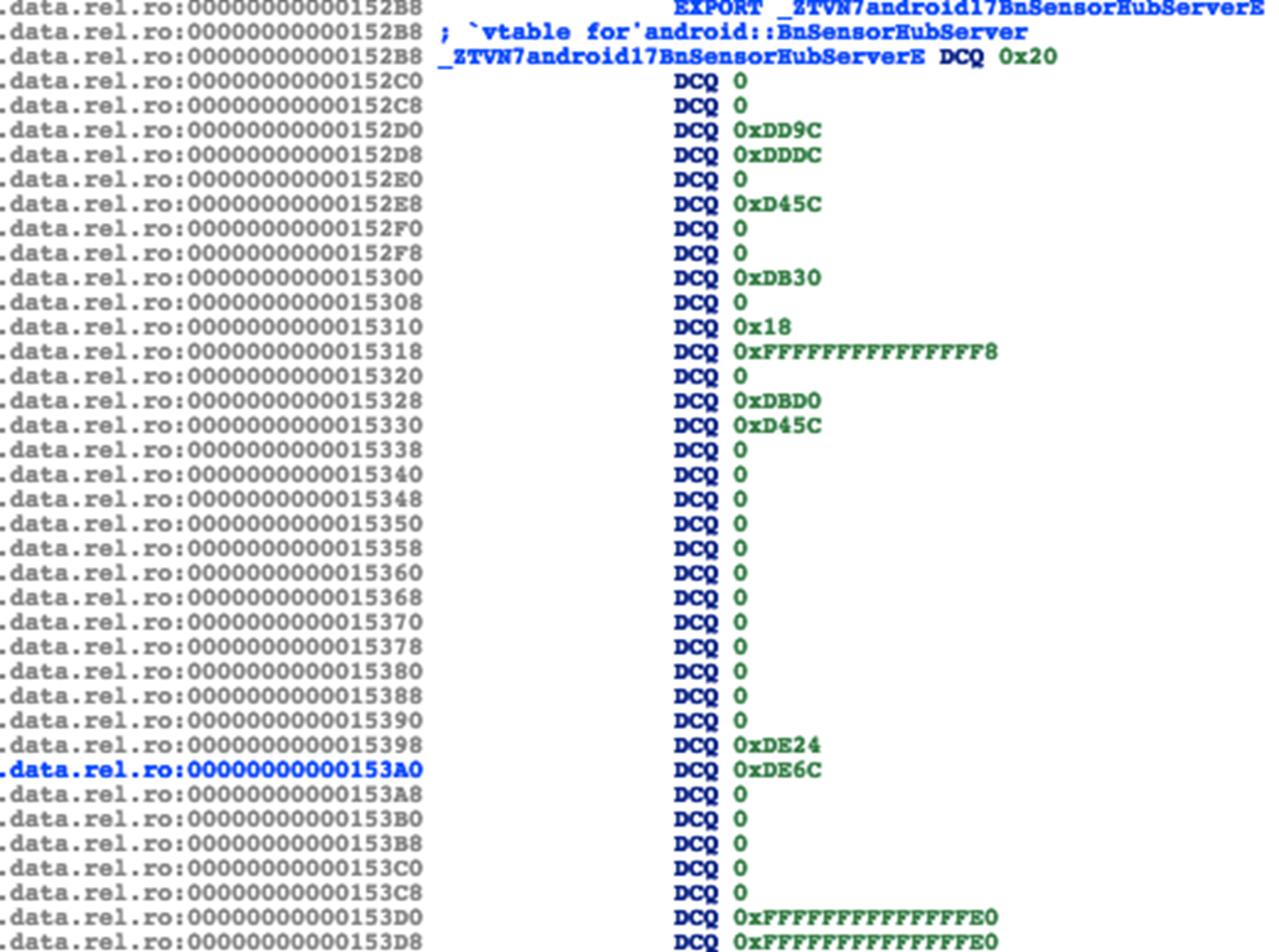
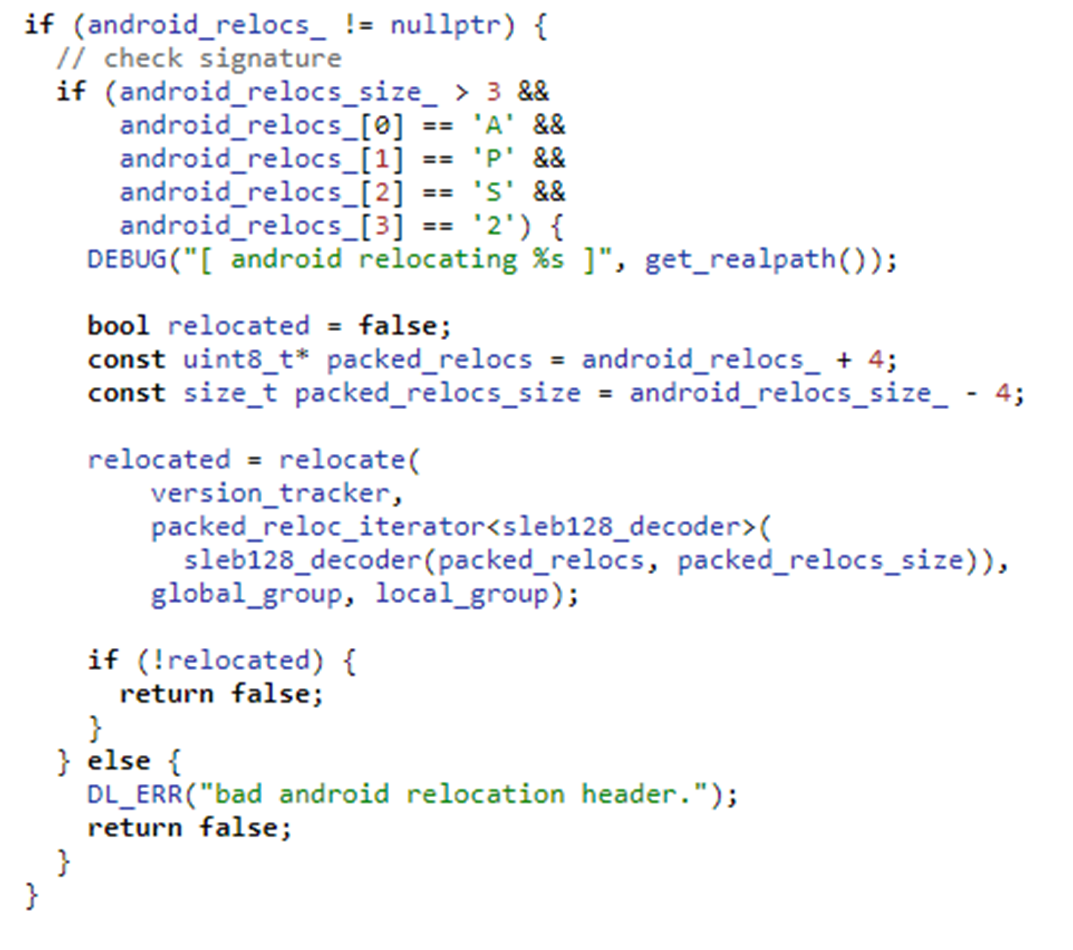

 那么在S8上相应的policy会不会有问题?通过反编译S8的SELinux policy,我们很遗憾地发现三星在这块还是做了不错的工作,相比于原版Android没有增加任何的额外allow policy。也就是说isolated进程仍然只能访问很少量的service和IPC,更别提启动activity之类的了。
那么在S8上相应的policy会不会有问题?通过反编译S8的SELinux policy,我们很遗憾地发现三星在这块还是做了不错的工作,相比于原版Android没有增加任何的额外allow policy。也就是说isolated进程仍然只能访问很少量的service和IPC,更别提启动activity之类的了。
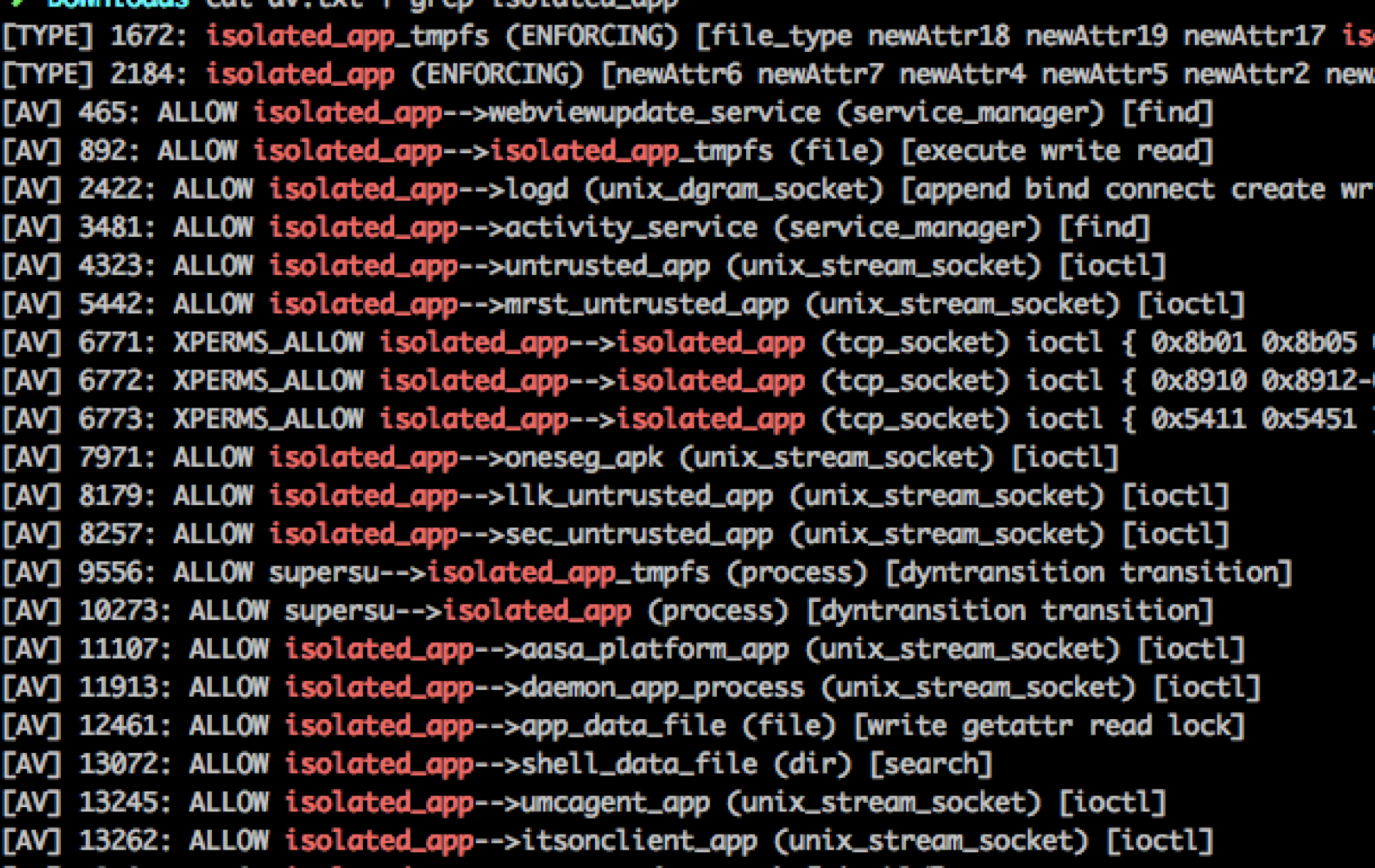 对于想从头了解三星浏览器(或者说Chrome浏览器)沙箱架构的读者朋友,可以参考我之前在CanSecWest上的
对于想从头了解三星浏览器(或者说Chrome浏览器)沙箱架构的读者朋友,可以参考我之前在CanSecWest上的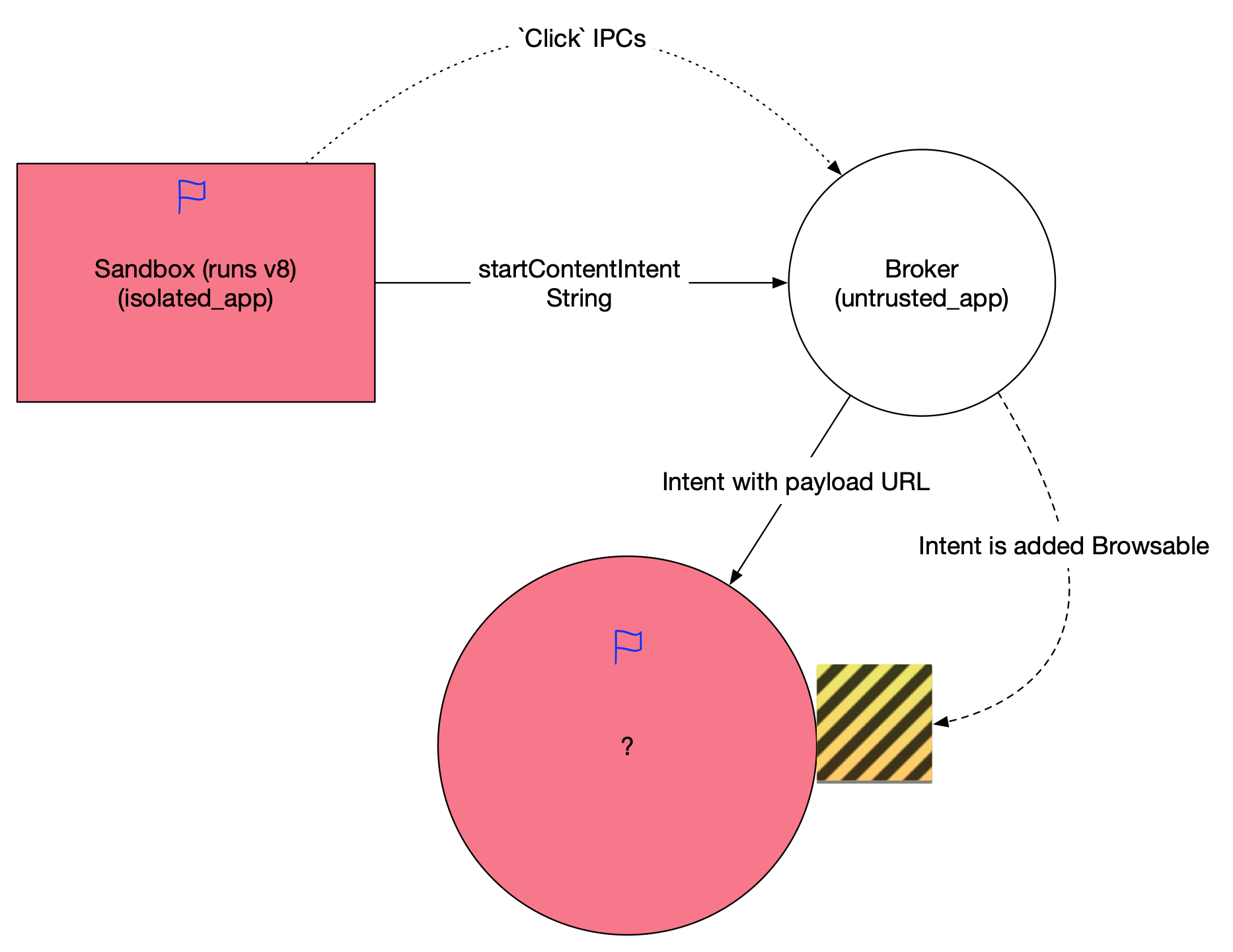 当然受到parseUri参数的限制,我们构造出的intent只能含有string和其他基本类型参数,不能包含一些fancy的parcelable,这对后续攻击面选择提出了要求。这个activity需要能满足如下条件
当然受到parseUri参数的限制,我们构造出的intent只能含有string和其他基本类型参数,不能包含一些fancy的parcelable,这对后续攻击面选择提出了要求。这个activity需要能满足如下条件 导出的
导出的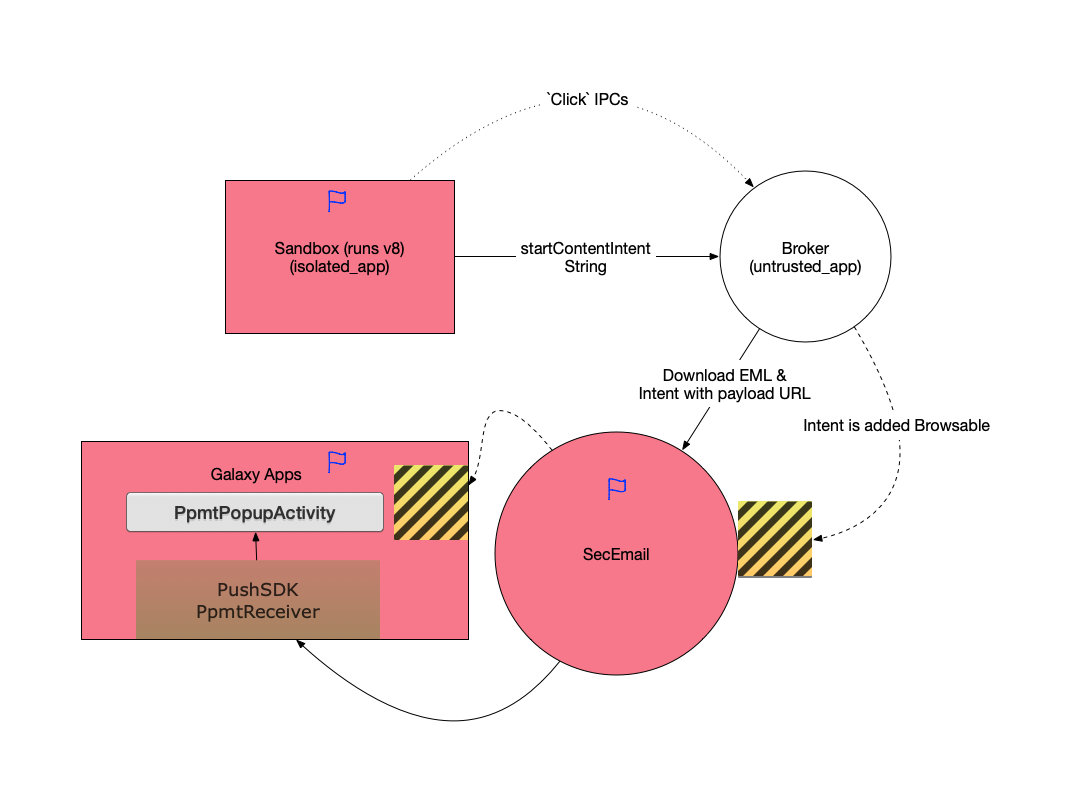 这就是我们攻破Galaxy S8的完整利用链。所有的漏洞均已在当时及时报告给了厂商并得到了修复。鉴于这个漏洞利用链每一步都是在寻找更高权限的进程或应用来作为跳板进行攻击的特点,我们将它命名为”Galaxy Leapfrogging” (盖乐世蛙跳)。完成攻破的Galaxy S8为当时的最新版本samsung/dreamqltezc/dreamqltechn:7.0/NRD90M/G9500ZCU1AQF7:user/release-keys.
这就是我们攻破Galaxy S8的完整利用链。所有的漏洞均已在当时及时报告给了厂商并得到了修复。鉴于这个漏洞利用链每一步都是在寻找更高权限的进程或应用来作为跳板进行攻击的特点,我们将它命名为”Galaxy Leapfrogging” (盖乐世蛙跳)。完成攻破的Galaxy S8为当时的最新版本samsung/dreamqltezc/dreamqltechn:7.0/NRD90M/G9500ZCU1AQF7:user/release-keys.